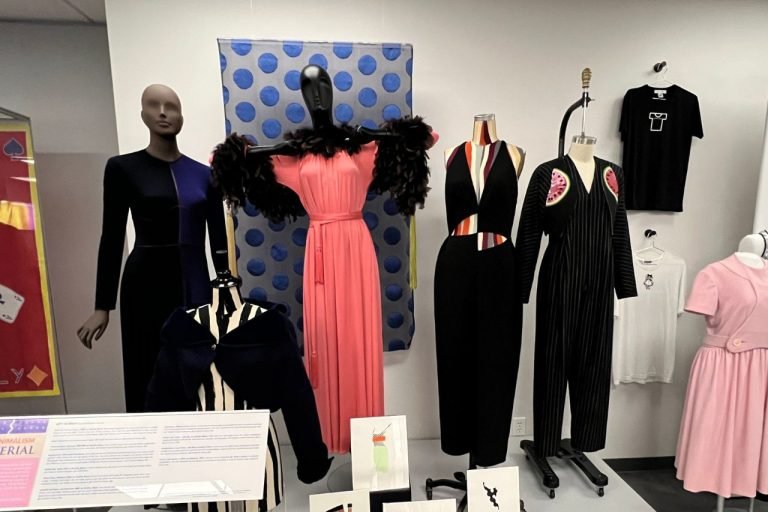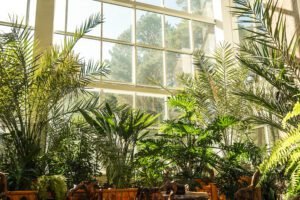The Geoffrey Beene Exhibit is a remarkable tribute to one of America’s most skilled fashion architects. Born in Haynesville, Louisiana, Beene built a legacy that blended craftsmanship, innovation, and whimsy. From structured silhouettes to hidden design details, his work remains a significant influence in the fashion industry. This exhibit, hosted by the LSU Textile and Costume Museum, offers an intimate look at Beene’s genius through an extensive collection of his work.
Table of Contents
Key Take-Aways
- Geoffrey Beene was a fashion innovator known for his timeless designs, craftsmanship, and attention to hidden details.
- The LSU Textile and Costume Museum houses one of the largest Geoffrey Beene collections, featuring 254 rare pieces.
- Beene’s designs blended structure, elegance, and creativity, using unexpected fabrics and techniques that redefined American fashion.
Early Beginnings: A Passion Born from Polka Dots
Geoffrey Beene’s journey into fashion began in an unexpected place—his aunt’s hope chest. As a child, he became captivated by the polka dot fabric lining the chest and, at just ten years old, he crafted his first garment using a Simplicity pattern.
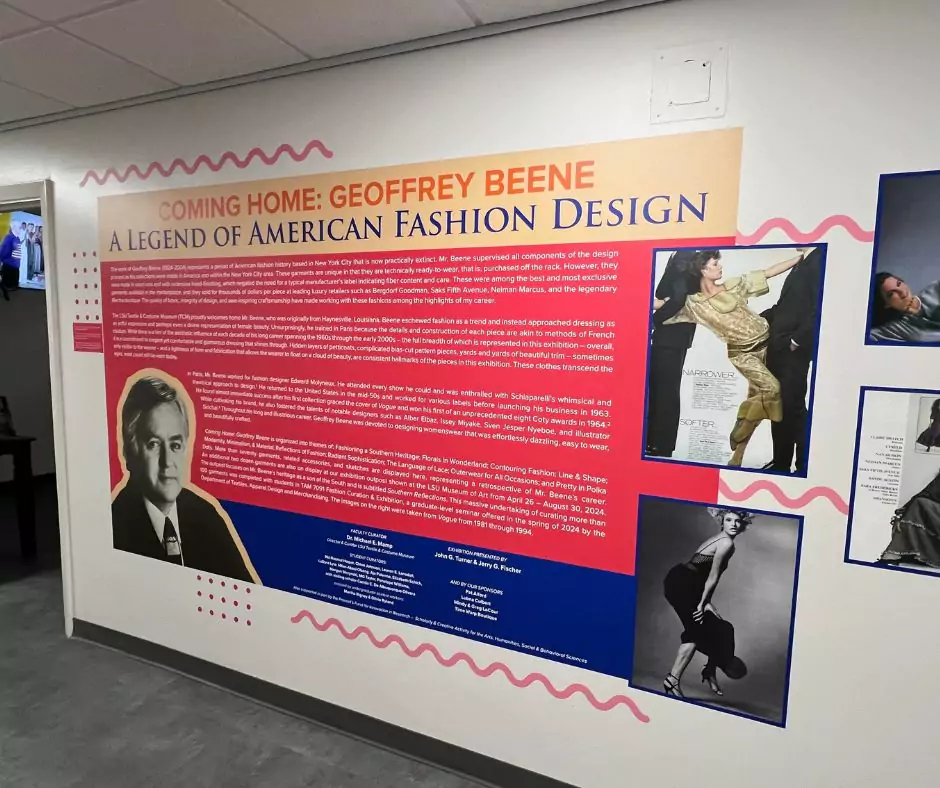
Michael, curator of the exhibit, shared:
“When Mr. Beene was 10 years old, he became obsessed with a polka dot fabric in his aunt’s hope chest. Eventually, she gave it to him, and with a Simplicity pattern, he made his first garment. We thought it was appropriate to begin our exhibition with this nod to polka dots.”
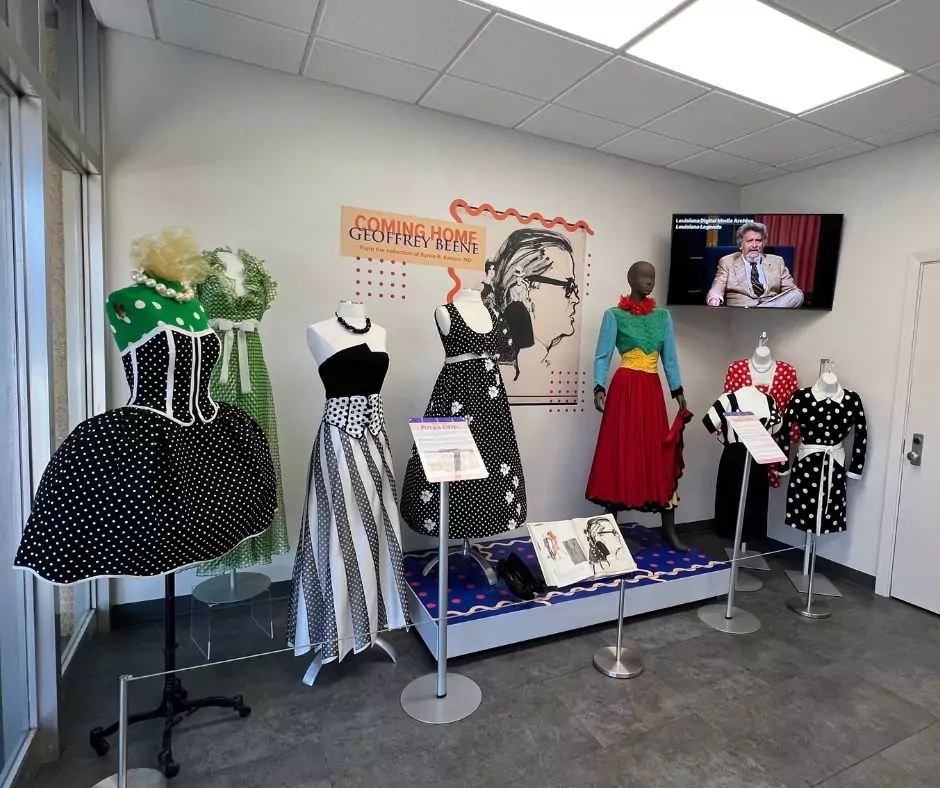
Polka dots became a recurring motif in Beene’s designs, symbolizing both his childhood inspiration and his timeless approach to fashion.
Defying Expectations: From Medicine to Fashion
Beene’s path to fashion wasn’t straightforward. Raised in the South, he was expected to pursue a conventional career in medicine. In a 1983 interview with LPB, he candidly expressed the societal pressures he faced:
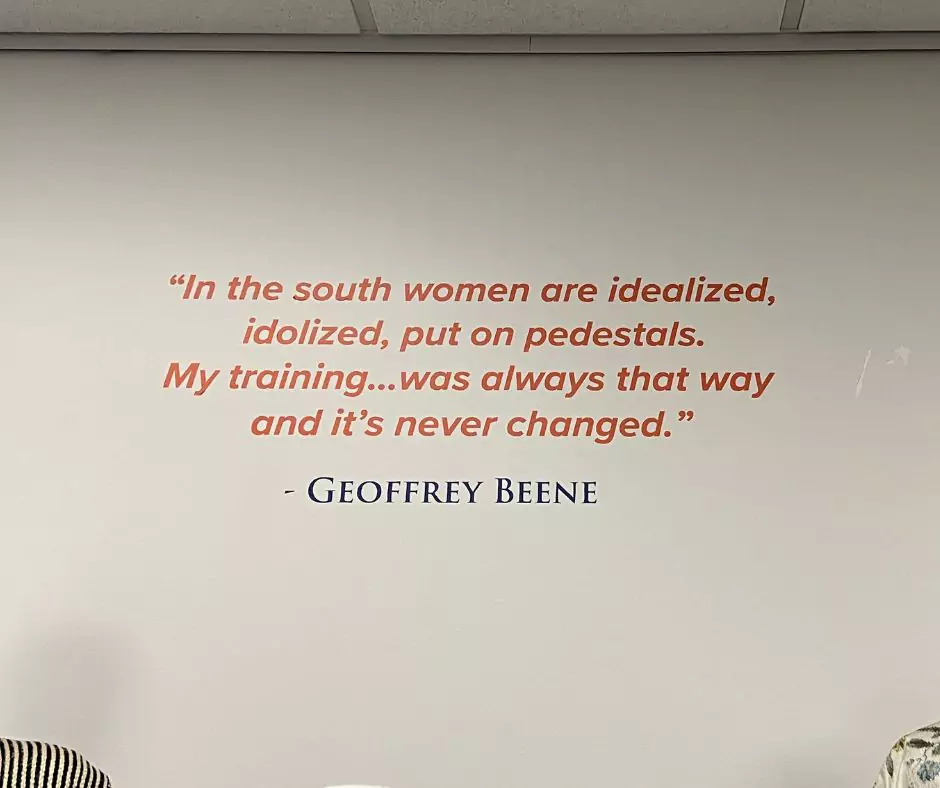
Geoffrey Beene shared:
“I dare say, in the South, if you are not a doctor, lawyer, or thief, everything else was a hobby. After three years of pre-med and one year of medicine, I went back to one of my first loves—art.”
His decision to follow his passion led him to study at Parsons School of Design, where he honed his skills before launching his own label.
The Birth of a Fashion House
In 1964, Geoffrey Beene founded his eponymous fashion house in New York. His designs quickly stood out for their architectural quality, attention to fit, and unexpected details. Unlike many designers focused on trends, Beene prioritized longevity and craftsmanship, ensuring his pieces remained relevant decades after their creation.
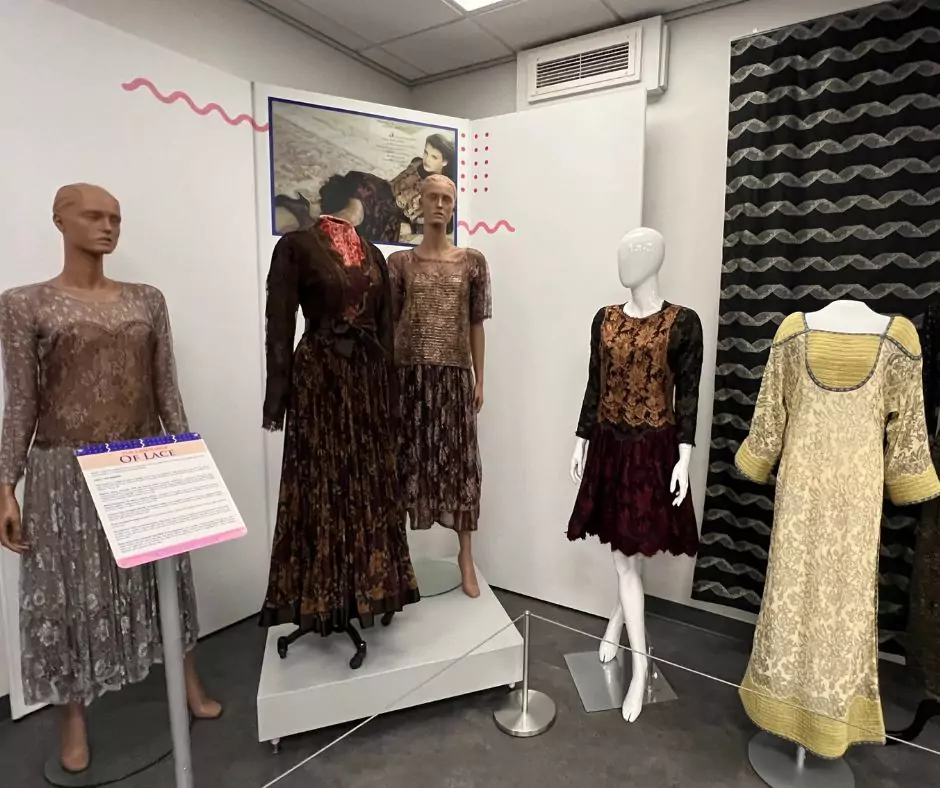
Beene’s designs were frequently featured in top fashion magazines like Vogue and Harper’s Bazaar, solidifying his status as a premier American designer. His clientele included celebrities, socialites, and even First Ladies, further elevating his reputation.
Signature Design Elements: Craftsmanship and Hidden Details
Beene’s designs stood apart due to their meticulous craftsmanship and surprising details only the wearer would appreciate. He was less concerned with trends and more focused on how garments made women feel—comfortable, beautiful, and confident.
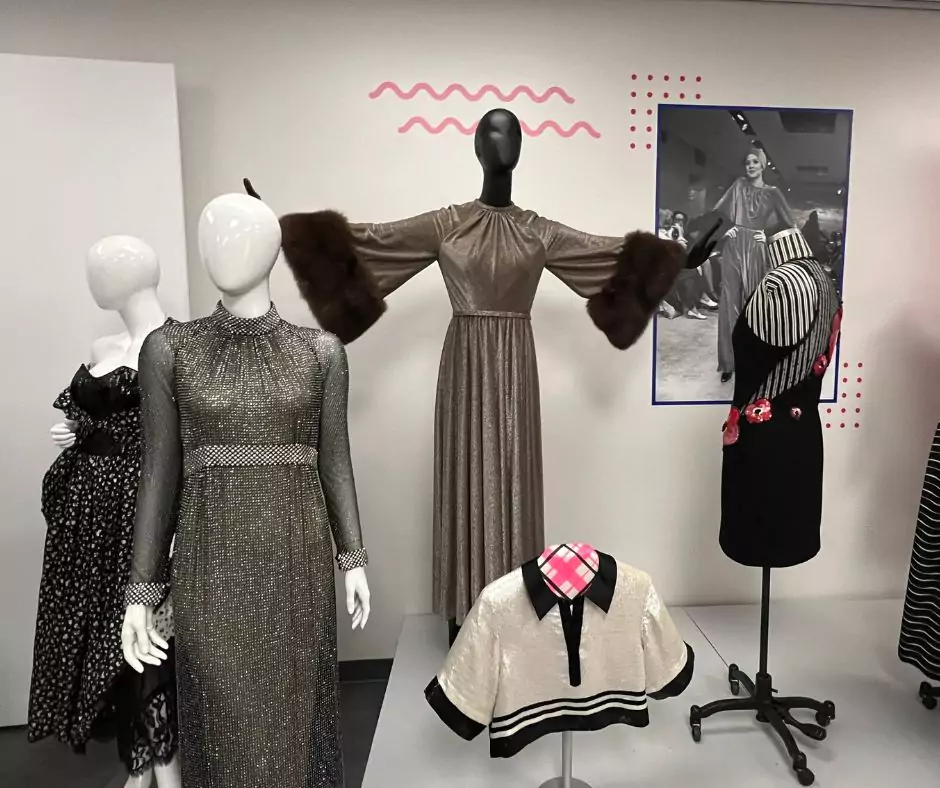
Michael explained:
“One of the reasons Mr. Beene isn’t as widely remembered as some other designers is that his work didn’t always have a distinct aesthetic component. Instead, he focused on well-constructed clothes, often with interior linings and finishings that only the wearer would see.”
This philosophy set him apart from his contemporaries, emphasizing artistry over mass appeal. His garments often featured hidden pockets, sculpted seams, and unexpected fabric combinations that delighted those who wore them.
The Geoffrey Beene Exhibit: A Rare Collection
The LSU Textile and Costume Museum houses one of the largest Geoffrey Beene collections in the nation, largely due to the generous donation of Dr. Sylvia Karasu.
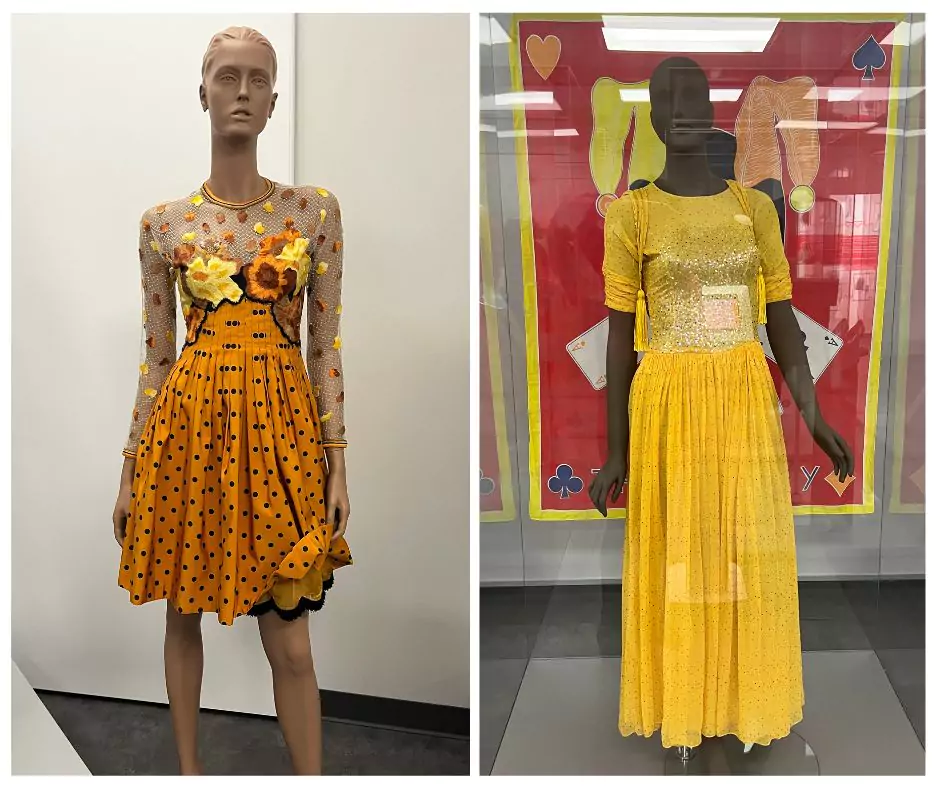
Michael noted:
“Dr. Karasu, pictured here on our donor wall, donated the entire collection on display—254 pieces in total. In the exhibit, we have 92 pieces up, making it one of the largest in our history.”

Beene’s influence extended to couture-level craftsmanship, even in ready-to-wear. One of his quilted outfits, which graced the cover of Vogue in 1982, originally retailed for $2,300. It was considered ready-to-wear, yet fewer than 12 to 14 pieces were ever produced, making them incredibly rare.
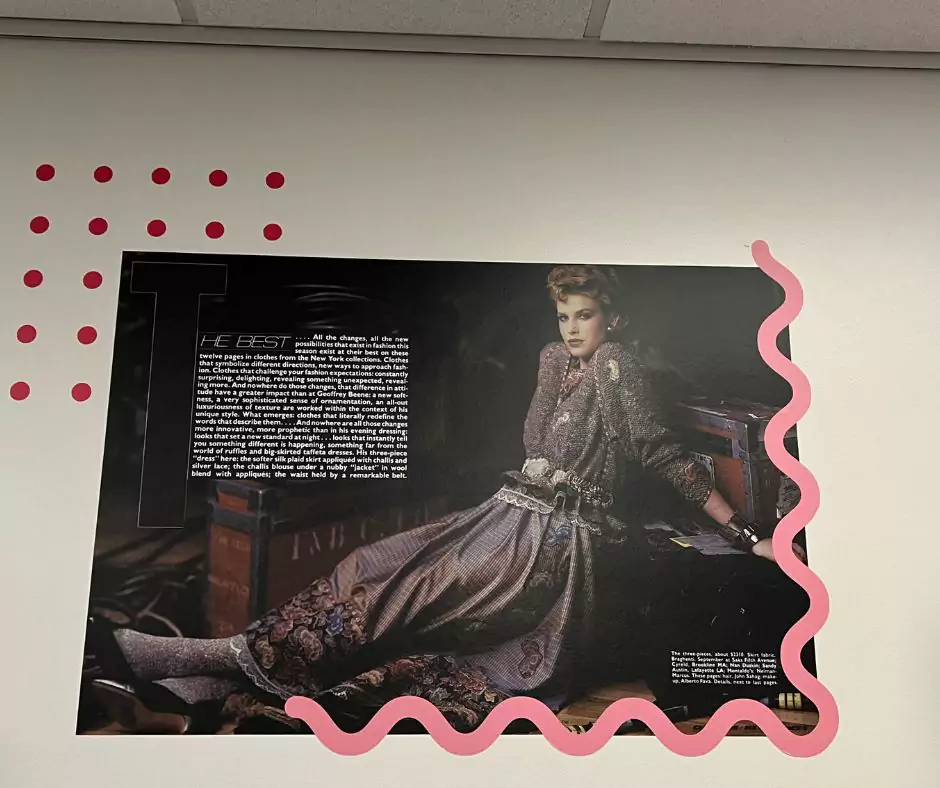
A Love for Flowers: A Signature Element
Beene’s mother worked as a florist, and floral motifs became a defining feature of his work. He used a variety of techniques to incorporate floral elements into his garments, from intricate beadwork to ribbon embroidery.

Michael described one of the floral dresses on display:
“This dress has a midriff completely hand-beaded and sequined to create a floral motif. The bolero and bodice achieve their floral design by manipulating ribbons on the surface and stitching them in place.”
Beene’s attention to intricate detail ensured his pieces remained both unique and timeless.
The Lasting Legacy of Geoffrey Beene
Beene’s impact on the fashion world extended beyond his garments. He was an advocate for innovation, pushing boundaries with his use of triangular seams, intricate pleating, and luxurious fabric combinations. His eight Coty Awards—the highest honor in American fashion—cemented his status as a design pioneer.
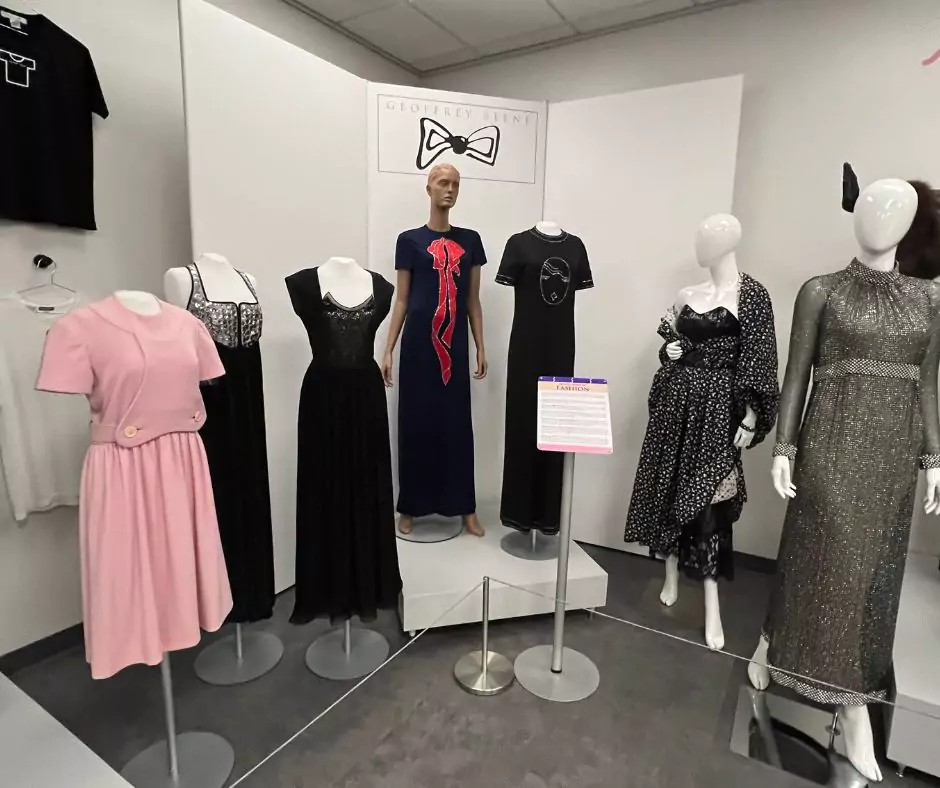
Although he passed away in 2004, Beene’s contributions continue to influence contemporary designers. His approach to effortless elegance, impeccable tailoring, and hidden luxury remains an inspiration in today’s fashion landscape.
Preserving Fashion History for Future Generations
Beyond the exhibit, the LSU Textile and Costume Museum serves as a steward of fashion history, preserving over 5,000 items ranging from prehistoric textile fragments to modern-day garments.
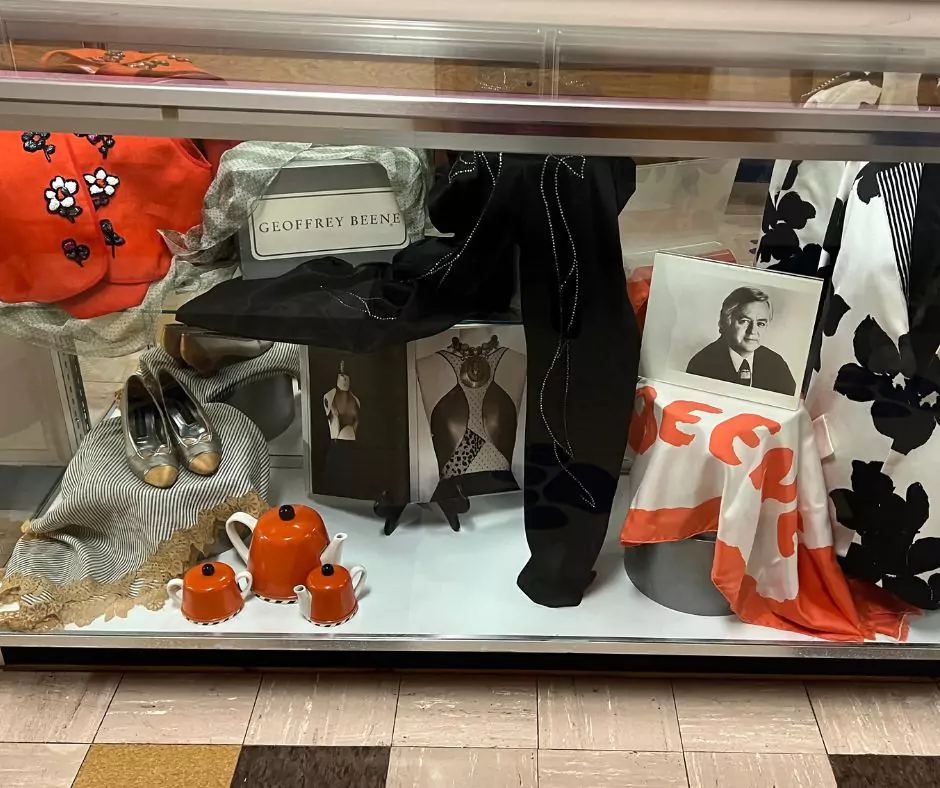
The museum’s state-of-the-art storage facility houses additional Geoffrey Beene outfits not currently on display, ensuring that future exhibits will continue to showcase his legacy.
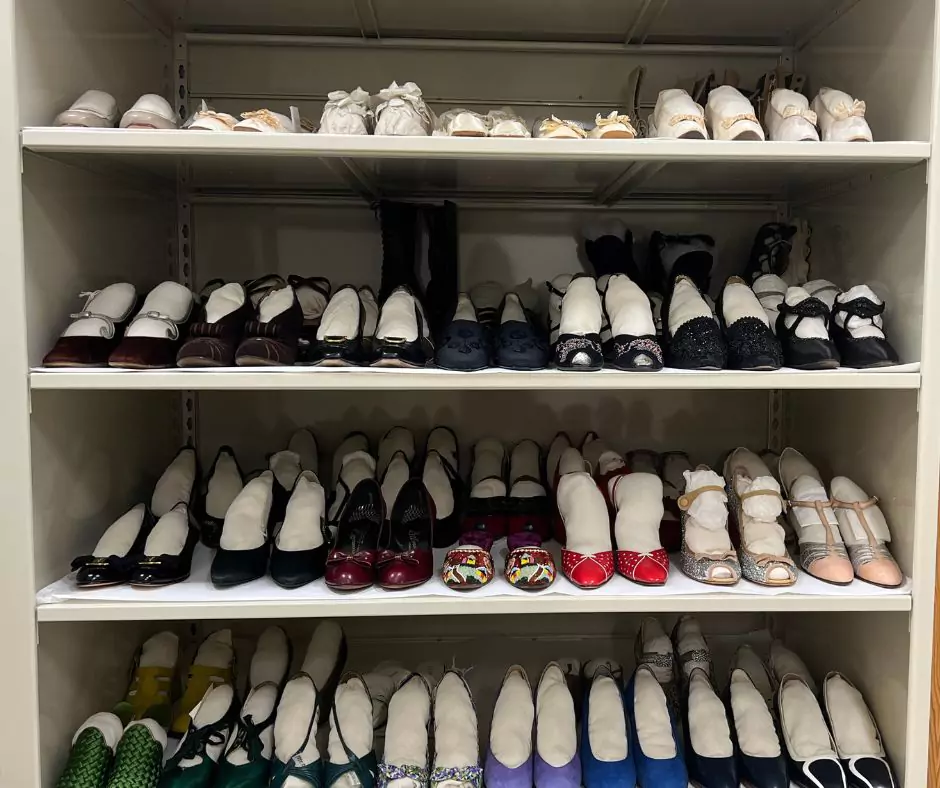
Michael reflected on Beene’s enduring impact:
“Geoffrey Beene pushed the possibilities of fashion—his work embraced unexpected fabrics, experimental juxtapositions, and his signature whimsy.”
The Enduring Influence of Geoffrey Beene
Geoffrey Beene’s influence transcends time. More than a designer, he was an architect of garments, creating wearable art with precision and elegance. His commitment to craftsmanship, attention to hidden details, and passion for innovation ensure his work remains relevant and celebrated.
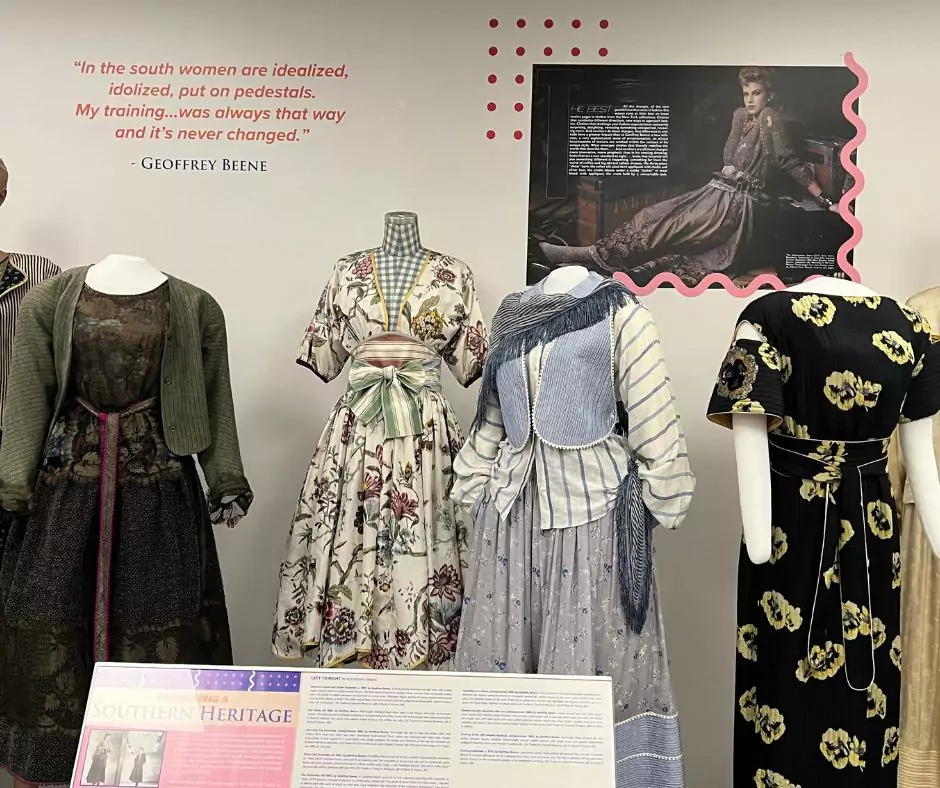
For those interested in fashion, history, and artistry, the Geoffrey Beene Exhibit offers an extraordinary glimpse into the mind of a true visionary. The exhibit not only showcases his legendary work but also serves as a testament to the lasting impact of American fashion design.
FAQs About the Geoffrey Beene Exhibit
Who was Geoffrey Beene?
Geoffrey Beene was an American fashion designer from Louisiana, known for his craftsmanship, innovative use of materials, and timeless designs.
Where is the Geoffrey Beene Exhibit located?
The exhibit is hosted at the LSU Textile and Costume Museum, which houses one of the largest collections of Beene’s work.
What makes Geoffrey Beene’s designs unique?
Beene was known for his meticulous attention to structure, hidden details only the wearer could see, and his use of unexpected fabrics and techniques.
How did Geoffrey Beene start in fashion?
Despite studying medicine, Beene’s passion for fashion led him to establish his own label in 1964, quickly gaining recognition for his elegant and innovative designs.
Can visitors see all of Geoffrey Beene’s work at the exhibit?
While the current exhibit showcases 92 pieces, the museum has a larger collection, with additional designs stored for future displays.
More Lousiana Posts For You
Shadows on the Teche: Louisiana’s Antebellum Tourism
10 Historical Museums in Louisiana You Can’t Miss
Explore the Rich Military Heritage at LSU Military Museum
Louisiana Mardi Gras: A Behind-the-Scenes Look and Fascinating History
The Legacy of Louisiana Sports Hall of Fame & History Museum
How Acadian Museum Keeps Cajun Culture Alive in Erath
Restored Nottoway Plantation Offers New Attractions
Here’s Why Hunt Slonem Paints the Same Bunnies Over and Over









